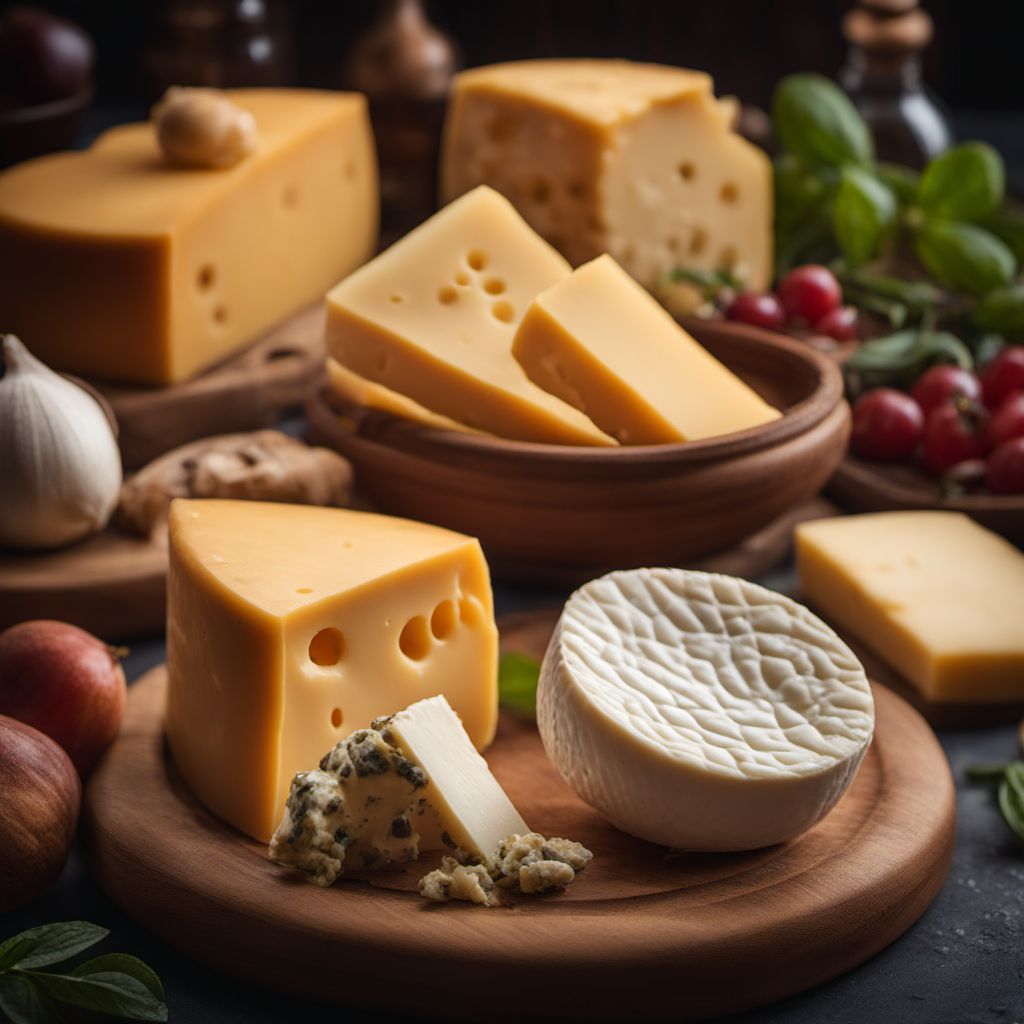
Ingredient
Cheese, cheshire
The Quintessential British Cheese: Exploring the Delights of Cheshire Cheese
Cheshire cheese is a semi-hard cheese with a crumbly and slightly moist texture. It has a pale yellow color and a distinctive tangy flavor that intensifies with age. The cheese is typically made from cow's milk and has a natural rind. Its crumbly nature makes it easy to slice or crumble, and it melts beautifully when used in cooking. Cheshire cheese is often compared to Cheddar but has a milder and less creamy taste.
Origins and history
Cheshire cheese originated in the county of Cheshire in England, dating back to the Roman era. It has a rich history and was traditionally made by farmers in the region. The cheese gained popularity during the Middle Ages and was even mentioned in the Domesday Book, a survey of England and Wales completed in 1086. Cheshire cheese was highly valued and became an important trade commodity. Today, it is still produced in Cheshire and other regions of England.
Nutritional information
Cheshire cheese is a good source of protein and calcium. It also contains essential vitamins such as vitamin A and vitamin B12. A 1-ounce (28g) serving of Cheshire cheese provides approximately 110 calories.
Allergens
Cheshire cheese contains milk and is not suitable for individuals with lactose intolerance or milk allergies.
How to select
When selecting Cheshire cheese, look for a cheese that is firm but not overly hard. It should have a slightly crumbly texture and a vibrant yellow color. Avoid cheese with any signs of mold or an off-putting odor. Opt for cheese that is freshly cut or wrapped to ensure its freshness.
Storage recommendations
To maintain the freshness and quality of Cheshire cheese, store it in the refrigerator in its original packaging or wrap it tightly in wax paper or plastic wrap. Keep it away from strong-smelling foods to prevent flavor absorption. Properly stored, Cheshire cheese can last for several weeks.
How to produce
Cheshire cheese production requires specialized equipment and knowledge. It is best left to professional cheesemakers who follow specific processes involving milk pasteurization, curdling, pressing, and aging. However, adventurous individuals can try making their own Cheshire-style cheese using recipes and guidance available online.
Preparation tips
Cheshire cheese is incredibly versatile and can be enjoyed in various ways. It is perfect for cheeseboards, sandwiches, and salads. It melts beautifully, making it an excellent choice for grilled cheese sandwiches, macaroni and cheese, or cheese sauces. For a delightful pairing, serve Cheshire cheese with crisp apples or enjoy it with a glass of red wine.
Substitutions
If Cheshire cheese is not available, you can substitute it with other crumbly and tangy cheeses such as Wensleydale or Lancashire cheese.
Culinary uses
Cheshire cheese is commonly used in traditional British dishes like the famous Cheshire cheese and apple pie, as well as in sandwiches, soups, and savory tarts. It adds a delightful tang and creaminess to any recipe that calls for cheese.
Availability
Cheshire cheese is primarily available in the United Kingdom, particularly in the regions of Cheshire and neighboring counties. It can also be found in specialty cheese shops or online retailers that offer international cheese selections.
More ingredients from this category » Browse all

Cheese, colby
"Colby Cheese: The Creamy Delight with a Mild Twist"

Cheese, lappi
Lappi Cheese: A Taste of Northern Delight

Cheese, bundnerkase
The Alpine Delight

Cheese, mimolette
Mimolette: The Bold and Nutty Delight

Cheese, vignerons
The Artisan's Delight: Vignerons Cheese

Cheese, vasterbotten
Vasterbotten Cheese: A Swedish Delicacy

Cheese, trappist
The Monastic Delight

Cheese, vacherin fribourgeois
The Creamy Delight: Vacherin Fribourgeois Cheese

Cheese, saint paulin
The Creamy Delight

Cheese, turunmaa
Turunmaa: The Finnish Delight

Cheese, cream havarti
The Creamy Delight: Havarti Cheese

Cheese, caerphilly
Caerphilly Cheese: A Creamy Delight from Wales